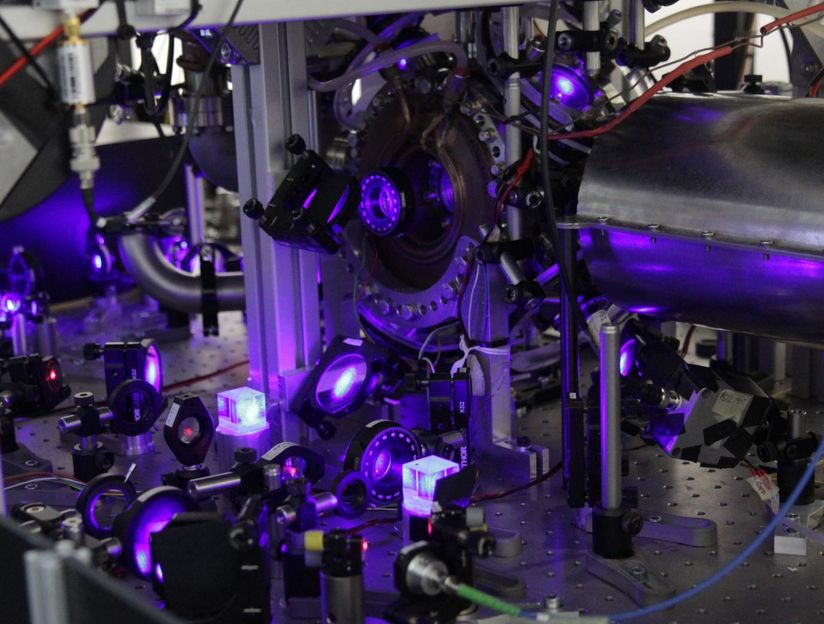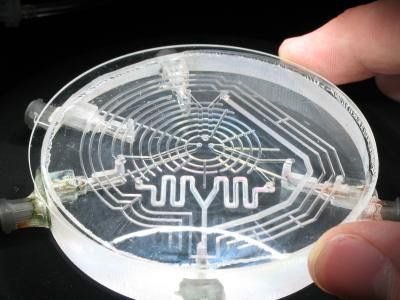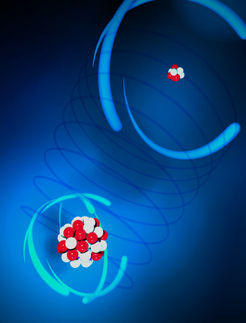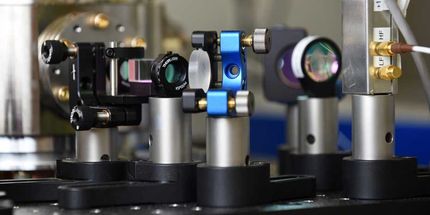Top-precision optical atomic clock starts ticking
A state-of-the-art optical atomic clock, collaboratively developed by scientists from the University of Warsaw, Jagiellonian University, and Nicolaus Copernicus University, is now "ticking away" at the National Laboratory of Atomic, Molecular and Optical Physics in Torun, Poland. As the first of its kind in Poland and one of just a handful of clocks of this caliber in the world, the new clock will keep track of the passage of time with extraordinary precision.

An atomic standard, one of the main elements of the optical atomic clock, now operating at the National Laboratory of Atomic, Molecular and Optical Physics (KL FAMO) in Toru?, Poland.
NCU, Anna Bielawiec-Osi?ska
Physicists from Warsaw, Torun, and Cracow have constructed an atomic clock that is one of just a few of its kind in the world - already now, at an early stage of operation, it has most likely become Poland's most precise clock. Occupying four rooms at the National Laboratory for Atomic, Molecular and Optical Physics (KL FAMO), it was built and launched into operation by the Polish Optical Atomic Clock (POZA) consortium formed by the University of Warsaw (UW, project coordinator), Nicolaus Copernicus University (NCU) and Jagiellonian University (JU).
The theoretical stability of the new clock, stemming from the advanced physical mechanisms it harnesses, means that it would take tens of billions of years for an error of a single second to accumulate - which is several times longer than the time that has passed since the Big Bang.
"We still have a way to go to achieve such great stability. Like every refined measurement device, our clock requires gradual, painstaking calibration, with certain improvements constantly being made. But already now, at the very beginning of our work, we have achieved greater stability than that required for clocks of this type by the International Bureau of Weights and Measures in Paris: we have an error of less than one second in tens of millions of years," says Dr. Roman Ciury?o, the director of KL FAMO.
Optical atomic clocks consist of an atomic standard, an optical comb, and an ultra-precise laser. The frequency of the light generated by the laser is precisely tuned to match the difference in energy between strictly defined levels in the atoms trapped inside the atomic standard. Time is then measured by counting the oscillations in the electromagnetic field of the tuned and stabilized laser light. The frequency of this laser light wave is nevertheless so high that counting individual "ticks" of the clock is beyond the capacity of modern electronics. This problem is solved using an optical frequency comb, a laser that generates very short pulses lasting mere femtoseconds (a millionth of a billionth of a second), which act like a toothed gear, translating the optical frequencies into lower, radio frequencies. These pulses serve as the optical counterpart of a ruler, whose intervals can be synchronized (with a matching rhythm) to the frequency of the laser light tuned to the atomic standard.
"Truly precise time measurements demand that the results be constantly compared against many other clocks. That is why, right from the start, we built two completely independent atomic standards. Readings from the two standards enable us to fine-tune the 'ticking' of the clock as a whole with significantly greater precision," says Dr. Micha? Zawada (KL FAMO, NCU).
Both atomic standards in the KL FAMO system operate with strontium 88 atoms, but in order to exclude repetitive errors, in one of them strontium 87 atoms can be used as well. The strontium atoms in each standard are isolated from the environment and from one another: cooled to a temperature below 10 microkelvins, they are situated inside an ultrahigh vacuum chamber and immobilized in a specially constructed optical trap generated by the beam of a supplementary laser.
To read the passage of time off the strontium atoms, they are exposed to the red light of the main, ultra-stable laser, with a frequency of approx. 429 terahertz. After the energy of the laser light is fine-tuned to match the transition in the atoms, the frequency of the laser beam is translated by means of the optical frequency comb into radio frequencies, at around 250 megahertz. At this stage the individual "ticks" of the clock are counted by the corresponding electronic apparatus.
Most read news
Organizations
Other news from the department science

Get the chemical industry in your inbox
By submitting this form you agree that LUMITOS AG will send you the newsletter(s) selected above by email. Your data will not be passed on to third parties. Your data will be stored and processed in accordance with our data protection regulations. LUMITOS may contact you by email for the purpose of advertising or market and opinion surveys. You can revoke your consent at any time without giving reasons to LUMITOS AG, Ernst-Augustin-Str. 2, 12489 Berlin, Germany or by e-mail at revoke@lumitos.com with effect for the future. In addition, each email contains a link to unsubscribe from the corresponding newsletter.
Most read news
More news from our other portals
Last viewed contents
Aerosols affect climate more than satellite estimates predict

Increased the performance and lifetime of lithium batteries in renewable energy facilities
Nice Issues Guidance For Taxotere® aimed to benefit patients with Non-Small Cell Lung Cancer

'Microfluidic palette' may paint clearer picture of biological processes
Krabbe_disease



























































